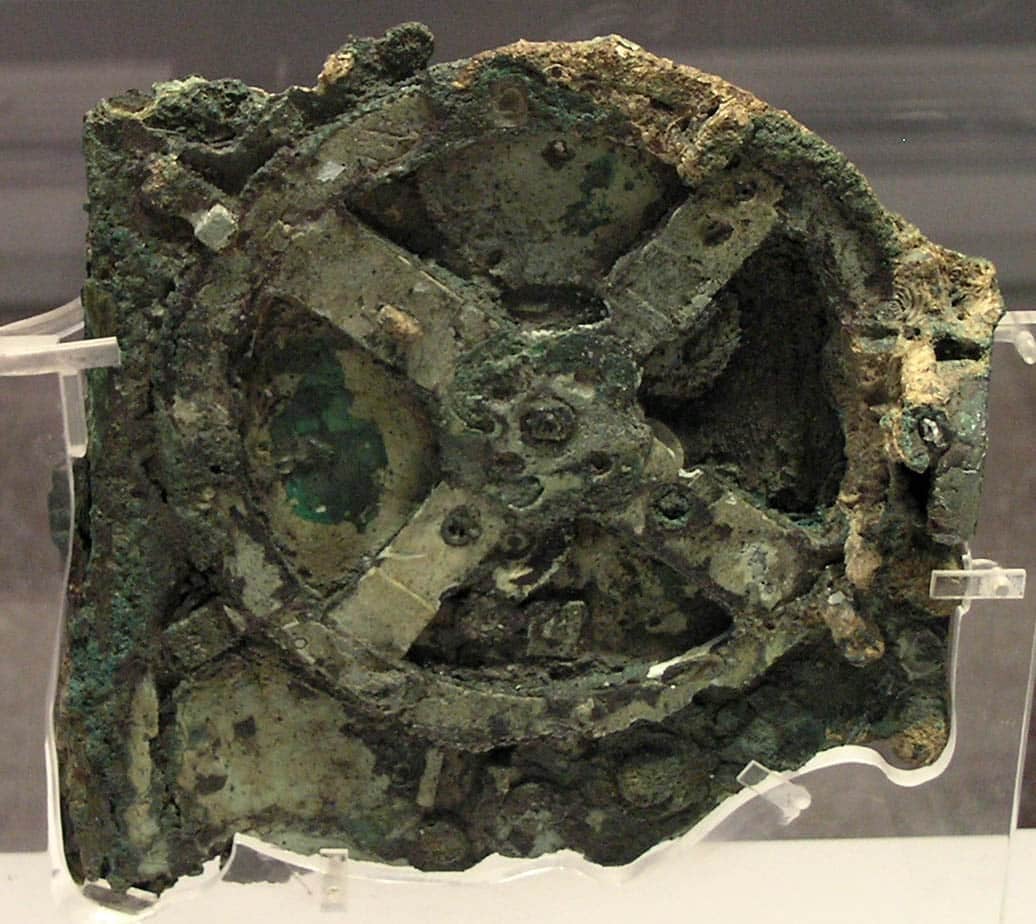

In a groundbreaking paper titled “Reconstructing the Antikythera Mechanism’s Central Front Dial Parts – Division and Placement of the Zodiac Dial Ring,” published in the Journal of Astronomical History and Heritage, researchers shed new light on how the ancient Greek Antikythera Mechanism modeled solar time with remarkable accuracy.
Greek scientists Aristeidis Voulgaris, Christophoros Mouratidis, and Andreas Vossinakis focused on the mechanism’s central front dials, particularly the zodiac dial ring, a circular scale that once tracked the Sun’s path through the zodiac constellations.
Using X-ray CT scans and high-resolution imaging of Fragment C, the researchers reconstructed four key components of the front dial in bronze, staying as close as possible to the original engineering.
Their analysis revealed that the zodiac dial initially featured 365 equal divisions, representing each day of the year. However, the most significant insight came when they recalculated the number of days assigned to each zodiac month based on the actual duration of the Sun’s journey through each constellation, acknowledging what astronomers now call the solar anomaly.
Instead of assigning equal time to each zodiac sign, the reconstructed model distributed days unevenly, matching the real-world variation in the Sun’s motion. This resulted in twelve uneven angular segments on the zodiac ring, effectively encoding the irregular lengths of astronomical seasons—an advanced feature for any mechanical device, let alone one built over two thousand years ago.
This careful redesign demonstrates how ancient Greek engineers achieved functional precision using minimal assumptions, effectively modeling complex celestial dynamics with mechanical elegance. The study reinforces the idea that the Antikythera Mechanism was not only a technological marvel but also a deeply sophisticated scientific instrument far ahead of its time.
In the spring of 1900, Greek sponge divers discovered a sunken ship loaded with ancient Greek treasures. The shipwreck had occurred in the waters of Antikythera, a tiny island between Crete and the Peloponnese.
Among statues, ceramic vases, coins, and earnings, there was a metal artifact by which the experts of the National Archaeological Museum in Athens were completely stumped. After observing triangular teeth and Greek inscriptions on the artifact, they dubbed it “The Antikythera Mechanism.”
Greek and foreign scientists found it immensely challenging to decipher the nature of the Antikythera device. They studied it for more than a century, and analysis even continues to this day.
The reasons for these extensive studies and great international interest in ancient Greek technology are complex, though clear. Here was a 2,200-year-old astronomical computer that simply had no precedent in history.
Clearly a work of incredible genius, it was made with interlocking bronze gears, that is, scientific technology. Scientists were shocked. After all, such technology was supposedly a product of modern times.
Related: The Cosmos of Ancient Greece’s Antikythera Mechanism
